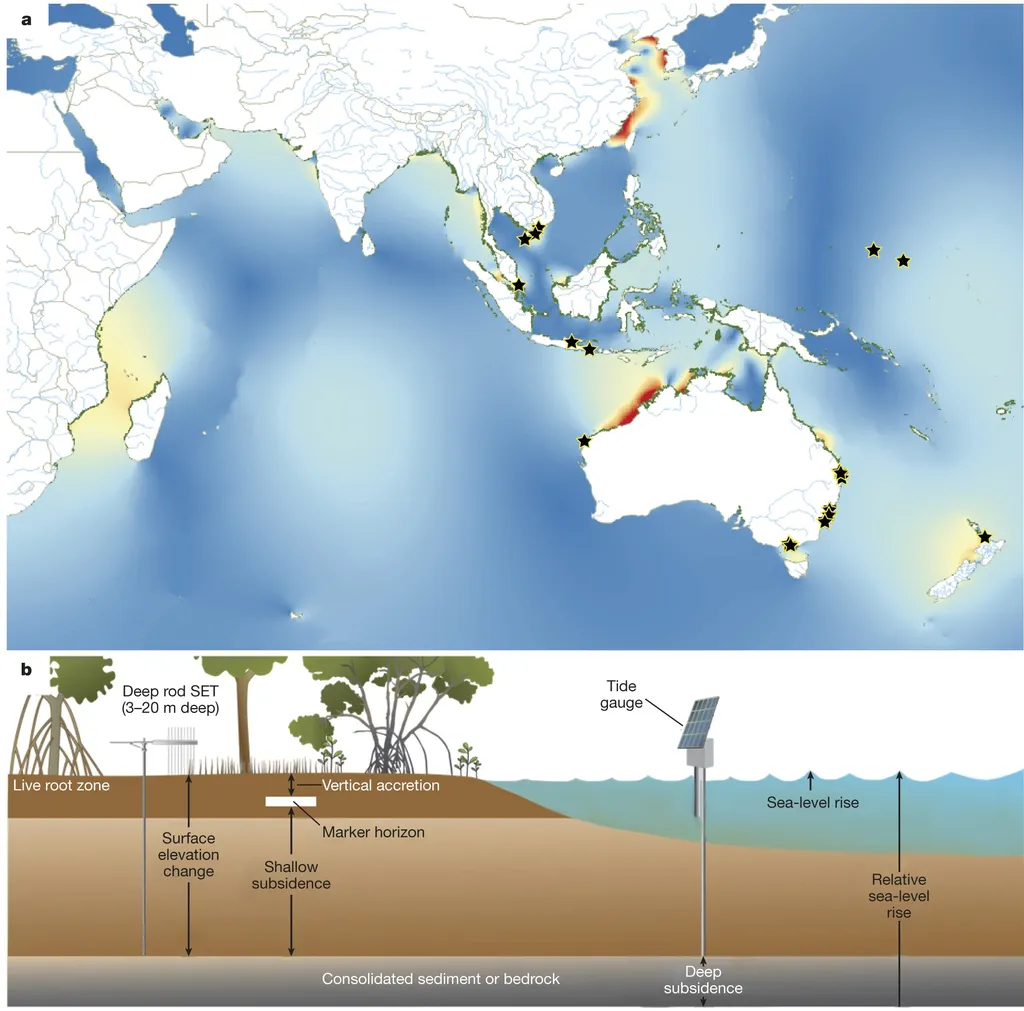In the battle against tidal flooding, a new study from Universitas Jember’s Inayatul Fikriyah is offering a lifeline to coastal communities, with significant implications for the energy sector. Published in *Jurnal Ilmiah Telsinas* (Scientific Journal of Telsinas), the research delves into the critical role of mangrove density in mitigating tidal flooding, particularly along the north coast of Demak Regency in Indonesia.
Fikriyah’s study, which employs spatial analysis through Geographic Information Systems (GIS) and satellite imagery from 2018 to 2023, reveals a stark reality: mangrove cover in the region has declined by 27.3%, primarily due to land use changes for aquaculture ponds. “The reduction in mangrove density is directly correlated with increased vulnerability to tidal flooding,” Fikriyah explains. “Areas with less than 2,000 trees per hectare are significantly more at risk.”
The findings are particularly relevant for the energy sector, where coastal infrastructure such as power plants and transmission lines are often vulnerable to tidal flooding. “Understanding the relationship between mangrove density and flood mitigation can inform better planning and investment in coastal energy projects,” says Fikriyah. “This is not just about environmental conservation; it’s about protecting critical infrastructure and ensuring energy security.”
The study suggests that a minimum standard of 3,000 mangrove trees per hectare is necessary for effective coastal management. This threshold could serve as a benchmark for future developments, ensuring that new projects are designed with resilience in mind. “We’re advocating for a hybrid approach that combines soft engineering techniques, like mangrove rehabilitation, with hard engineering solutions,” Fikriyah notes. “This integrated strategy can enhance long-term coastal resilience and protect vital assets.”
The research also highlights the importance of spatial planning in Demak Regency. By focusing on mangrove conservation within the policy framework, local authorities can mitigate the impacts of tidal flooding and safeguard economic activities. “This study provides a roadmap for policymakers and investors to make informed decisions,” Fikriyah concludes. “It’s a call to action for integrating ecological solutions into commercial and industrial planning.”
As the energy sector continues to expand into coastal regions, the insights from Fikriyah’s research could shape future developments, ensuring that projects are not only economically viable but also environmentally sustainable. By prioritizing mangrove conservation and integrating it into coastal infrastructure planning, the energy sector can play a pivotal role in building resilient communities and protecting vital assets from the growing threat of tidal flooding.

